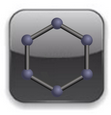Thermoplastics
Thermoplastics
| Classification of polymers | |
The classification of polymers is important and the diversity of polymers requires multiple classification systems, some of which are: Classified by source Classification based on the structure. Classification based on molecular forces. Classification based on the polymerization mode. Classification based on variety of monomers involved in the structure Classification of polymers according to the origin Three types of origin of polymers may exist: Natural polymers: These are obtained from nature, for example, the source of plant, animal, etc. present biodegradable polymers, called biopolymers. (natural gum, cellulose, PLA, etc.) are also. Synthetic polymers: these have been prepared by humans in laboratories and currently produced industrially. (Polypropylene, polyethylene, polyamide, PBT, PET, PC etc) Semisynthetic polymers: these polymers are derived from natural sources and subjected to further chemical / physical treatment before reaching its final shape. Classification based polymers structure linear polymers: the monomers are linked together to form long straight chains. Example: the polypropylene is a linear polymer. Branched chain polymers: these polymers are made straight chain branching monomer. They have low melting points and low densities. Example: Polyethylene Crosslinked polymers / polymer network: these polymers are formed by bifunctional and trifunctional monomers with a strong covalent bond between the various linear polymer chains. These polymers are brittle by nature. Example - epoxy resin Classification based polymers molecular forces Thermoplastics: These polymers soften with heat application and therefore, can be molded into the desired shape, example - PBT, PET, PP, PE, PA etc. Thermoset: these polymers have their individual chains covalently bound during polymerization, or by application of heat or chemical treatment. Once established, its shape can not be changed. Resist subsequent mechanical deformation or softening by heat or solvent attack Good for adhesives, coatings, etc. example: epoxy resin , melamine Elastomers: polymer chains are elastic and can stretch as the rubber. They have weak intermolecular forces between the chains and may have crosslinks, example - SBS, SEBS, NR, CR Classification of Polymers based on mode of Polymerization Addition polymers: FORMED by the Repeated Addition of monomer molecules, the monomers are unsaturated hydrocarbons. There is no elimination product in the reactions. Example: PVC Condensation polymers: FORMED by Condensation Between two different Repeated bi-functional or tri-functional monomeric units, along With the formation of elimination product like water, NH3, HCl etc. Example: PA6, PA66 etc. Classification of polymers according to the type of monomer involved in the structure Homopolymer: when the same monomer is repeated along the polymer chain, is called homopolymer Co-polymer: when at least two different monomers along the entire chain, co-polymer is called. Degradable polymers are classified oxy-degradable and degradable polymers degradable by UV,. Polymers The polymers (Greek poly, many, groupers, part, segment) polymer can be defined as a material consisting of molecules formed by constitutional repeating units of a more or less orderly manner. Given the large size of these molecules are called macromolecules. That is, the polymers are chemical compounds whose molecules are formed by the binding of other molecules smaller called monomers, which are linked to each other as if they were the links of a chain. These chains, which sometimes also have branches or crosslinks, can reach a large size, which is why they are also known by the name of macromolecules. What distinguishes the polymers of material constituted by molecules of normal size are its mechanical properties. In general, polymers have excellent mechanical strength because the polymer chains attract large. The intermolecular attractive forces depend on the chemical composition of the polymer and may be of various kinds. Internal structure of the polymers Chemical composition: The most important polymers are composed of atoms few nonmetallic elements: C, H, O, N, F, Cl and Si. The chemicals most abundant polymers are carbon and hydrogen, oxygen is present in the polyester and acrylics, nitrogen polyamides, fluorine in Teflon, chlorine in PVC and silicon silicones. Primary links: Son of covalent type. Given the proximity of the constituent elements of the polymers in the Periodic Table, they have very similar electronegativities and therefore bind covalently (sharing electrons). Intermolecular forces: They are forces of electrostatic attraction between electrical dipoles existing in a polymer chain and dipoles that exist in adjacent polymer chains. There is a close relationship between the intensity of the intermolecular forces and the structure and uses of the polymer. The intensity of intermolecular forces is growing with: 1. Proximity between polymer chains 2. Polaridadde existing elécticos dipoles in chains 3. length of the polymer chains Molecular Structure Polymer Three cases differents : Linear: constituted by individual polymer chains, unbranched Branched: made from more individual polymer chains or with branches less long Crosslinked: the polymer chains are linked together by chemical bonds primary, the same intensity as the links in the main chain Concept and classification A polymer (poly Greek of many, groupers, part, segment) is a substance whose molecules are at least approximately multiples of units low molecular weight. The unit is the low molecular weight monomer. If the polymer is rigorously uniform molecular weight and molecular structure, degree of polymerization is indicated by a Greek numeral, according to the number of monomer units containing; Thus we speak of dimers, trimers, tetramer, pentamer and beyond. Classification according to their behavior polymers Thermoplastics their behavior is determined from its Glass Transition Temperature Tg Tª> Tg plastic behavior Tª <Tg glassy behavior type are semi-crystalline or amorphous
Just admit plastic deformation In manufacturing a heating operation there occurs where large crosslinking They are crosslinked polymers When heated plasticized not break or burn it (pyrolysis) Elastomers polymers Elastomers and rubbery material composed of long chainlike molecules are able to resume its original shape when a deforming force is removed. Tg <Ambient temperature Vulcanizing process to increase the number of crossovers and give greater rigidity. |     |
Copolymers For addition s containing several structural units, as is the case of some very important in that styrene participates. These combinations of monomers are made to modify the properties of the polymers and achieve new applications. What is sought is that each monomer imparts properties of the final material; thus, for example, ABS, acrylonitrile provides chemical resistance, butadiene and styrene flexibility imparts to the material the rigidity required by the particular application. Clearly by varying the proportions of the monomers, the properties of copolymers are also varying, so that the process allows copolymerization to some extent produce polymers tailored. | |
| Etymology | |
Plastic plastic derived from the Greek word, which translates as moldable. The polymers, the basic molecules of plastics, are naturally present in some vegetable and animal such as rubber, wood and leather materials and, if well in the field of modern materials technology such compounds generally fall into the group of plastics, which is preferably reduced to synthetic preparations. |  |
| Homopolymers | |
| Copolymer regular | |
| Copolymer randomaleatorio | |
| Block copolymers | |
Insert copolymers |

